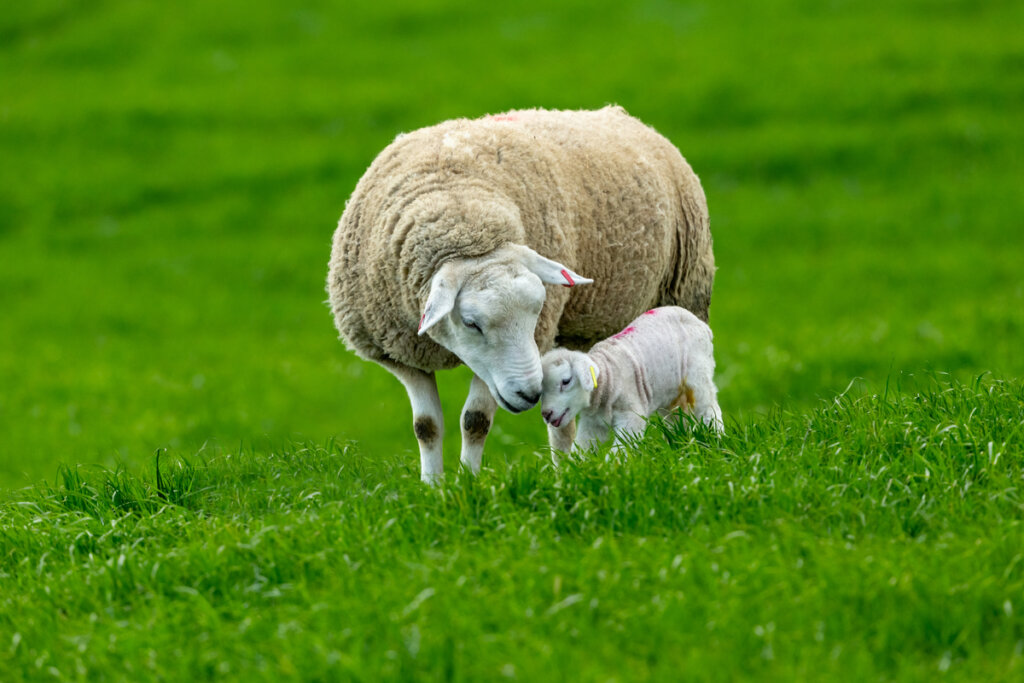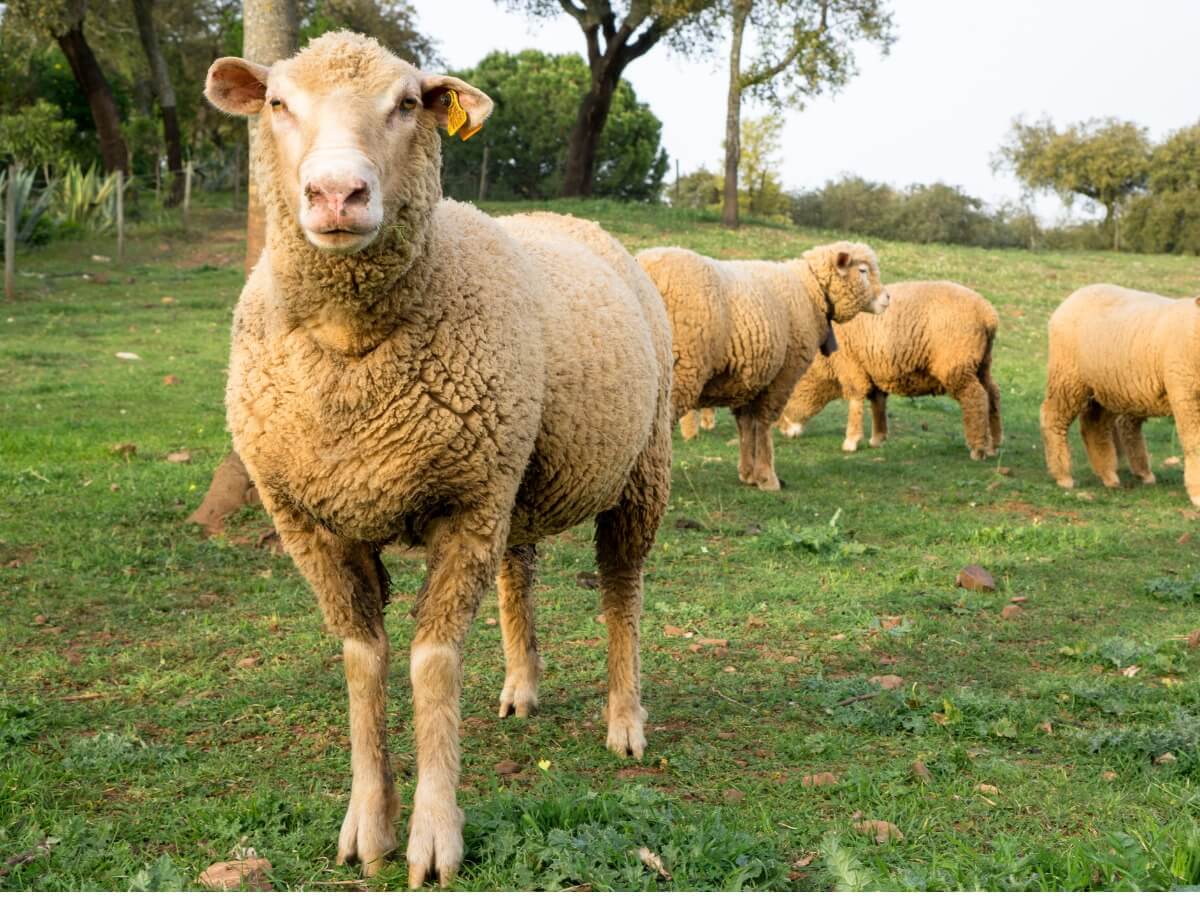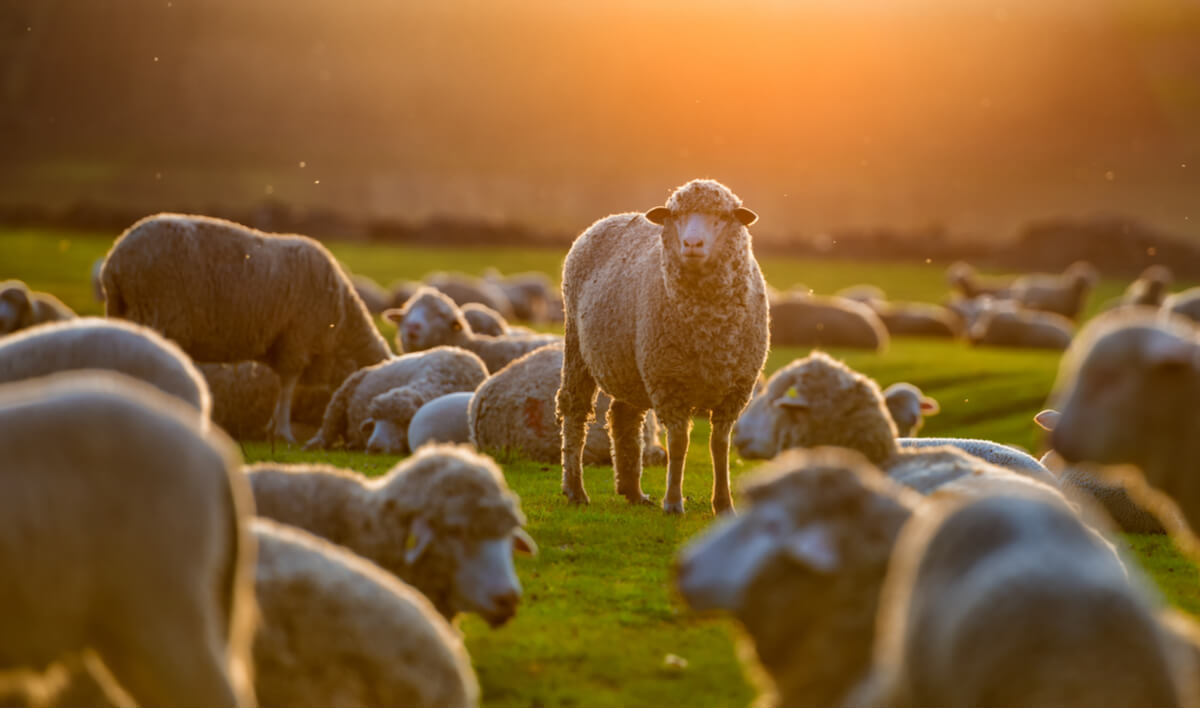Everything You Wanted to Know About Sheep Behavior!

Expressions like the “black sheep of the family” are common idioms in our language that suggest that sheep behavior isn’t appreciated too much. However, when you get to know these animals better, you’ll see that they’re a lot more complex than you’d think.
Studies on sheep behavior have contributed a lot to sociology and comparative psychology. If you want to get to know humans a little better, then get to know sheep – here are the keys to their behavior!
The origin of sheep
Sheep (Ovis orientalis aries) are artiodactyl mammals belonging to the bovine family, and their relationship with humans dates back to their domestication around 11,000 BC. In fact, it’s the first animal to undergo this process in human history.
These mammals are strict herbivores that inhabit mountainous areas, but adapt well to different altitudes and temperatures. Generally, in the wild, sheep can be spotted wherever there’s grass or low shrubs.
Sheep belong to the ruminant group, and as such, they graze for up to 10 hours a day. Ruminating is a relaxed process that is combined with social behavior, such as grooming.
Gregarious animals
Sheep temperament is docile and calm, but they always maintain a minimum level of alertness to react to possible attacks. Being prey animals, their flight reactions are fast and impossible to control.
On the other hand, sheep are strongly gregarious animals. They can recognize each other individually and prefer the company of other members of their group. When isolated, they quickly lose the foraging instinct and suffer great stress, even panic or depression.

Sheep communication
Recognition between individuals is carried out by vision and smell, which allows sheep to get to know each other and mothers to know which is their offspring. Sexual communication also depends on scent, as males identify females in heat through the pheromones they secrete.
In fact, offspring learn to recognize their family by smell from birth, thus forming the necessary bonds with their entire group. As they grow up, they create a strong relationship with their companions and even show affection for those closest to them. In addition, they communicate with them through various types of vocalizations.
These are the most characteristic vocalizations within sheep behavior:
- Bleats: These have different meanings depending on the situation, although they usually serve as an attention call. They are observed between mothers and lambs or when the members of the social nucleus look for a sheep that has separated from the group. Each ewe has its own voice timbre.
- Grunts: These are emitted mainly by males during the mating season. A softer version is heard in mothers with newborns.
- Nasal snorting: These are reactions of surprise, although sheep also snort when they want to send a warning.
- Silence: When a sheep makes no noise and remains motionless, it is usually in pain or sick.
Sheep behavior
Sheep live in large flocks consisting mostly of females and lambs, accompanied by one or more males. There is the figure of the “guide” sheep, which is the one that the others follow to look for food, shelter, or flee in case of danger.
Males organize their hierarchy based on age, physical strength and reproductive experience, while females organize their hierarchy based on kinship and age.
Although they are popularly considered unintelligent, a study showed that their IQ wasn’t much lower than that of pigs, and practically equal to that of cows. These mammals are able to learn their own name and recognize faces, both of humans and of other sheep.
Another study published in the journal Current Biology described behavior considered to be selfish in the face of predator attacks. When they sense imminent danger, all sheep try to get to the center of the flock, as it’s those that remain on the periphery that are most exposed.
Sheep behavior when grazing
Their daily peaks of activity follow a cycle of early morning feeding, rest and rumination, and another period of less intense feeding before sleeping. It’s important to adjust to this if keeping sheep in captivity, rather than forcing them to change their schedules.
As they’re naturally distrustful animals, the keeper’s approach should be progressive, observing their responses at all times. To lead the group, it’s easiest to identify the guide sheep and lead it to the places of interest. The other members of the flock will follow.
Normally, sheep tend to forage together, but as pastures become scarce, they will break up into smaller groups. In any case, they’re always on the lookout for their fellow sheep, in order to react in time in dangerous scenarios.
Maternal behavior of ewes
The gestation of ewes lasts about 5 months, so a female can give birth twice a year. At the time of lambing, the mother seeks a quiet, secluded place to give birth.
The mother-lamb bond is forged through physical contact. The mother licks her lamb to groom it, so that it becomes familiar with her vocalizations and scent. The lamb instinctively seeks suckling and quickly learns to recognize its mother.
If the lamb is separated from its mother before it can identify her with the first lick, the mother may reject it. Maternal rejection paralyzes lactation, and the lamb’s survival is drastically affected as a result.
This first licking helps maintain the lambs’ body heat, promotes circulation and aids in the standing of the young.
How to train sheep
Sheep have a great capacity for learning. However, their fearful nature means that the behavioral tools used for other species – such as dogs – don’t work with them. The most commonly used technique is desensitization, in which an event associated with the fear is repeated until it no longer produces the flight response.
Sheep training is especially useful for managing veterinary visits and routine inspections. Resorting to food to reinforce a sense of security is more than recommended, as these are animals for which stress and panic cause major health problems.

Did you know all this information about sheep behavior? You may well look at them with different eyes now. Undoubtedly, these animals are one of the best examples that looking beyond an animal’s appearance has wonderful consequences.
All cited sources were thoroughly reviewed by our team to ensure their quality, reliability, currency, and validity. The bibliography of this article was considered reliable and of academic or scientific accuracy.
- Marino, L., & Merskin, D. (2019). Intelligence, complexity, and individuality in sheep. Animal Sentience, 4(25), 1.
- King, A. J., Wilson, A. M., Wilshin, S. D., Lowe, J., Haddadi, H., Hailes, S., & Morton, A. J. (2012). Selfish-herd behaviour of sheep under threat. Current Biology, 22(14), R561-R562.
- A. (2018, 5 agosto). Oveja – Información, características y curiosidades. Animapedia. https://animapedia.org/animales-terrestres/oveja/
- Food Empowerment Project. (2020, 10 junio). Ovejas y Cabras. https://foodispower.org/es/animales-terrestres/ovejas-y-cabras/
- Hinch, G. N. (2017). Understanding the natural behaviour of sheep. In Advances in sheep welfare (pp. 1-15). Woodhead Publishing.
